I Had A Really Bad Migraine Last Night, But I've Run Out Of Everything Except These Hungarian Pain Killers
I had a really bad migraine last night, but I've run out of everything except these hungarian pain killers my dad gave me 9 years ago, anyway I don't remember anything and I can't feel my tongue and the only thing in my search history is this

More Posts from Feed-the-trash and Others

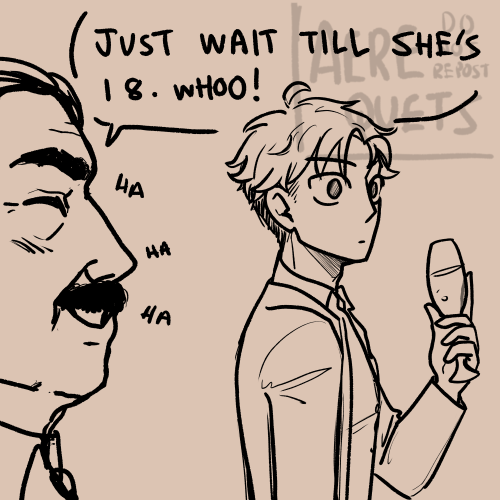
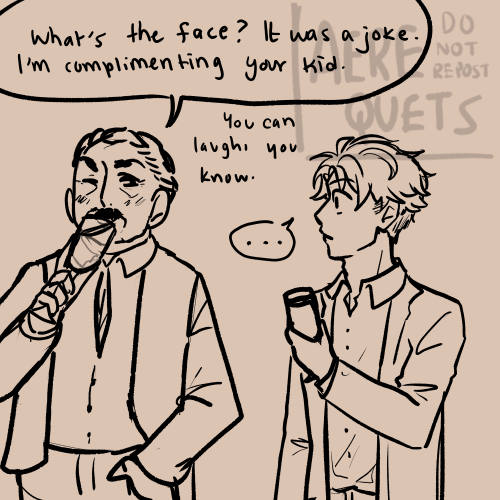

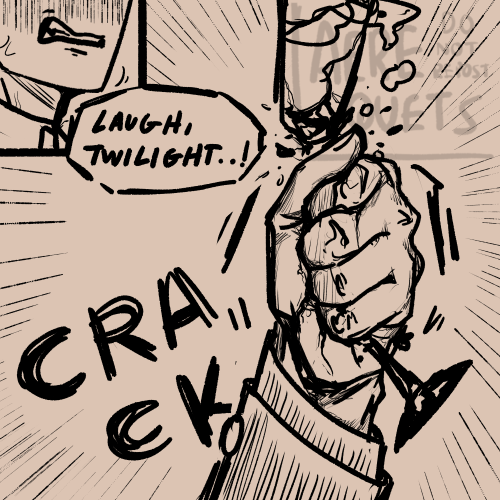
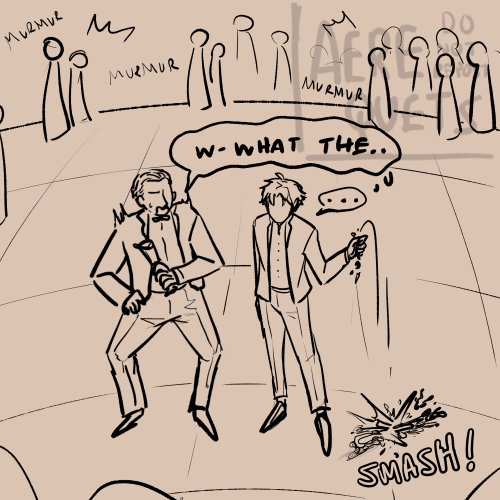

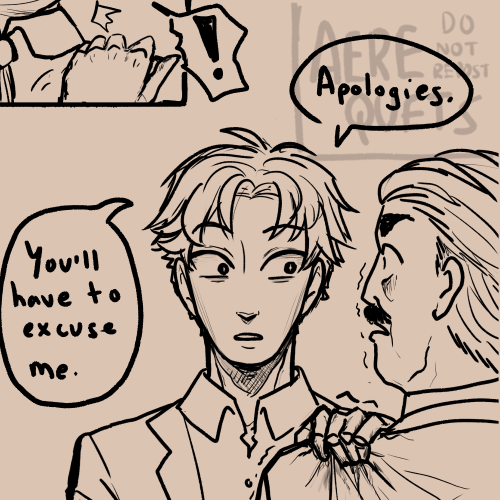
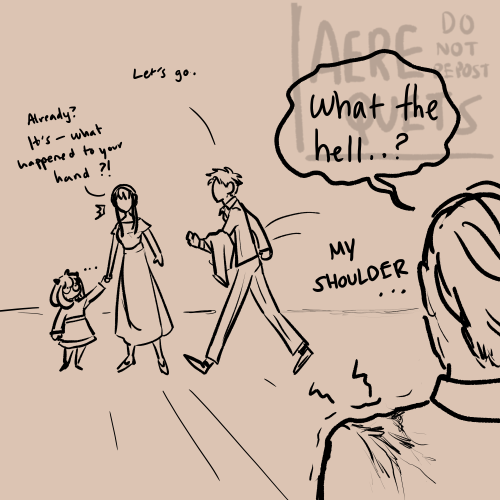
wdym? grabbing an important man’s shoulder with a bloody hand was totally part of the plan. the mission is priority #1 at all times. spies don’t have feelings 😎
(that man is just lucky he wasn’t speaking to yor…. unless she were to somehow find out what he said…. that wouldn’t be good for him……)
Why are bald people always catching strays in these tumblr polls

My name was ‘Dave’ on instagram awhile back - for trolling purposes - and I had ten requests for messages and group chats about joining cults/white supremacy groups.
Don’t get me wrong, I signed up to all of them, but why ‘Dave’. What about that name inspires the thought, ‘yeah, Dave says slurs’.
Im working on a story, and its been in the works since 3 days ago but im super excited
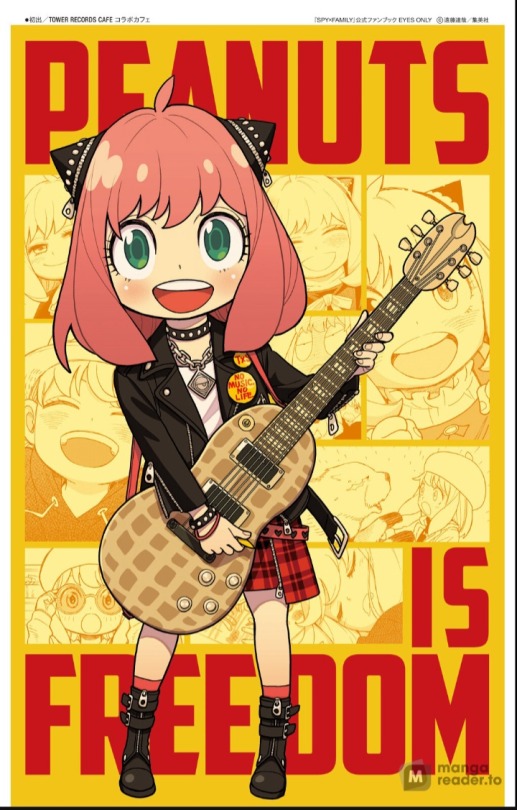
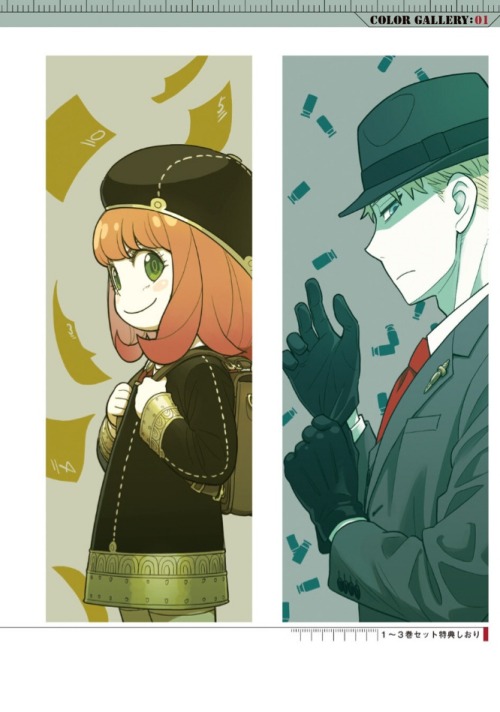
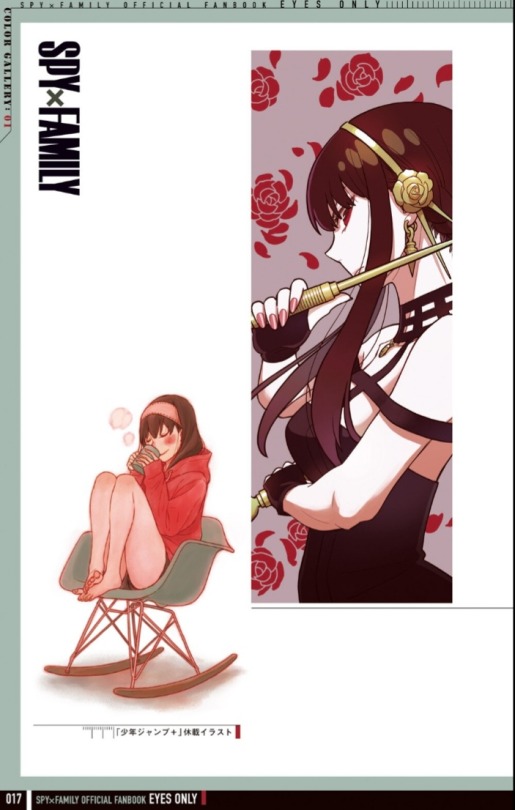
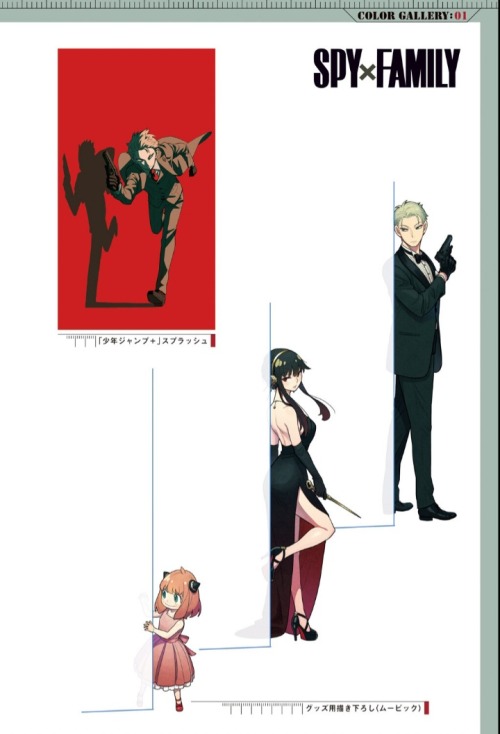



Some of my favorite photos from the Spy x Family Official Fanbook: Eyes Only
5 Things Literary Magazines Look for in Short Stories
Submitting your work for publication in a literary magazine can be nerve-wracking. They outline what they’re looking for when they open for submissions, but it can seem pretty vague.
Here are a few things they generally look for when searching for the next stories they’ll publish.
1. A Story That Sticks With Their Submission Requirements
Literary magazines plan their editions at least a month in advance, if not more. They may create new editions based on a theme, a seasonal motif, or another connecting idea that pulls every story and visual design together.
Always check the submissions page for their requirements. If a magazine wants to create a spooky edition for October but you submit a heartwarming historical fantasy story that has no spooky elements, you won’t get selected.
Requirements also include essential details like page length, word count, and formatting instructions. The editorial teams know how much time they have to read submissions and how much space they have for selected stories in their upcoming edition. Following these requirements makes you much more likely to get selected.
2. A New Perspective
People don’t buy literary magazines to read the same stories over and over again. They’re looking for new perspectives and points of views in stories that have fresh ideas. The editorial team also doesn’t want to read the same types of stories every time they open for submissions.
You can bring a new perspective or twist on their required themes or story details by thinking outside the box to connect with your readers while bringing something fresh to the table.
3. Vivid Characters
It’s almost impossible to enjoy a story when the characters don’t feel real. You can avoid that by creating character profiles or outlines for your cast. Imagine their backstories or write scenes from the most important moments of their life.
Also, consider what they want from your story’s plot. What’s their goal? What will they learn? Vivid characters are dynamic, so they should grow into a different (possibly better, but not always) version of themselves by your story’s resolution.
It’s also helpful to use free online tools to create characters. I have a huge list on this blog post for generating their faces, mapping their world, and inventing other details so they feel like real people to you and your readers.
4. A Meaningful Purpose
You might write a story just to get published, but that might lead to a story that lacks meaning. Published short stories have some kind of meaningful purpose to make them matter to the editorial team and readers.
Your readers might learn a life lesson from your work or process some shared human emotion or experience through your characters. It’s helpful to consider a theme for your story before writing it so it always has a clear purpose.
5. Unexpected Plot Elements
Readers want to be entertained. Entertaining stories sell magazines. Remember to add a few unexpected plot elements or twists as you’re writing a story with the intent to publish it.
I have a few ideas in this blog post that might inspire you, but you can also create plot twists by shifting your perspective.
If a story has a character who stops to talk to someone in a crosswalk, your readers will likely assume they’re about to get hit by a car or pushed into traffic if the scene has rising tension. Counter their expectations by asking yourself, what’s the opposite of what they’re expecting? Your character might face an oncoming car with a distracted driver by lifting it over everyone as it’s about to crash into pedestrians. Maybe they learn how to fly or lie flat on the road as the car passes over them.
Purposefully thinking about what your readers will expect and choosing to do the opposite is a great way to add unexpected plot elements that also pique the interest of editorial teams.
-----
It’s also important to remember that you’re likely submitting a story alongside hundreds if not a thousand other writers. It depends on how popular or well-known the literary magazine is.
You can write a great story and still not get published because a big part of that experience is getting lucky. You have to hope the right editor who will appreciate your narrative style and story choices will be the one to open your submission.
Sometimes writers take years to get published. Give yourself some grace as you send your work off. Whether or not your stories get accepted, you’re still learning from the process and developing your writing skills. Eventually, your work will shine in the place it’s meant to be.
Egg yolks and honey (eyah!)
Get out
There is a lack of integration of TikTok slang on this app
Character is Plot
Character is plot. I mean that as, your main character’s arc is (literally) the main plot. If you think about arcs as something to put over or alongside an existing plot, they probably aren’t working very well. Or at least, you don’t have as much time or space as you need to fully explore both a good plot and a good arc. They are one of the same, so I’d even say throw whatever idea you have about plot out the window. They’re called arcs now. Congrats.
This also means if your characters aren’t working, the whole thing is going to fall apart. So I’m going to relay what was taught to me about solid character creation, and finding your arc!
There’s five critical things that go into character building: Goal, Objective, Unconscious Need, Disrupting Characteristic, and a Formative Event. They all work very closely together, so once you get one going, the others typically fall into place. (oh, and they sound complicated, but I promise they’re not.)
Goal and Objective go hand in hand, I’m sure you’re telling me right now that actually they’re the same thing. You’re right, they kind of are. The reason I split them up is so I make sure I always get not only a journey for my character to go on, but a meaning behind it. Action and intention. So:
Objective: the actionable (your character can work at it) objective of the story. What your character is physically doing throughout the story. Frodo taking the ring to Mordor is his Objective, Rapunzel going to see the lanterns in Tangled. Mulan protecting her dad by taking his place. Essentially, objective is what we’ve thought of as plot.
Goal: the intention behind the objective. Why is your character doing this? This is usually the emotional core of the story, where we tuck away arc and characterization. Rapunzel wants to see the lanterns to finally get out and start her life. Mulan wants to prove she’s worthy. Your character wants to make someone proud, or hurt someone who’s hurt them, or feel loved. This is the emotion behind their objective and cannot on its own be turned into an arc. One cannot ‘prove themselves worthy’ out of a void, that’s the goal, you also need an objective, ‘prove themselves worthy through taking their father’s place in the war’.
If you have these, great job! You’ve got a really solid foundation for your arc. What your character wants, and why they want it. However, if we just follow an objective and goal, your characters are going to feel very lifeless—so we need some additional depth:
Unconscious need: This will probably be the one you get stuck on the most. Good thing is, both of these words are hints on what to do here, Unconscious meaning your character doesn’t realize it, couldn’t put it into words, and Definitely doesn’t say it out loud. Need, is the start of how to answer this blank space. Your character needs to realize something they haven’t been aware of to achieve their goal. Or they need to realize a flaw in their goal. For example, a woman wants to run for president (objective) to make her mother proud (goal), but she needs to realize all her mother wants is to spend more time with her, and by using all her time to campaign for president, she’s actually splitting them further apart. Mulan needs to internalize that she doesn't have to be bigger than life to make her parents proud of her and bring them honor.
Your need is character specific, which means no one else should need the same thing. If your need can apply to multiple people, you probably didn’t get specific enough. Everyone needs to be loved, everyone needs to feel cared for. However, not everyone closed themselves off from relationships and needs to open up to people if they want to foster a connection. See the difference?
This step will directly influence how you write your climax, because it leads to a choice your character makes. They can either realize their need and adhere to it (Fine, I’ll take my name out of the campaign for president/call my parents/apologize to the people I’ve hurt) or continue with their objective despite it. Typically, characters that ignore their need after they realize it are considered to have tragic arcs. Getting your character to realize their need is the end of their positive arc, it’s what we’ve been working towards all along.
So it’s important. Don’t skip, yes?
Disrupting Characteristic: this one is fun. This step is adding a flaw to your character, specifically, it’s the flaw that’s holding them back from meeting their need. If there was nothing holding them back, wouldn’t they be satisfied already? So that’s the easiest place to start with this one, what they need, and what could possibly be holding them back from it. If they need to see their father as he truly is, maybe their disrupting characteristic is that they’re optimistic to a fault. This characteristic could be a thing the character does (idolizes their father, acts fiercely independent, etc.) or a belief they have about themselves or the world (self conscious, believes humans are inherently cruel, etc.) It’s the epitome of their internal conflict, they need something, but some ingrained part of them is keeping them from it. Evil? Absolutely. But us writers tend to be.
The disrupting characteristic is the internal arc your character goes through, they are working and being challenged throughout the story to overcome this characteristic. So in another example, a romantic character may realize their parents led them to believe they were undesirable (unconscious need), and that it has no merit, so they gain a new confidence and overcome their self consciousness (disrupting characteristic) to ask their ideal partner out.
You see what I mean why I say all these steps work together. Need and disrupting characteristic and goal are so intertwined that it can be difficult sometimes to voice them apart from each other, but they also can’t carry each other. A solid need and disrupting characteristic isn’t going to do much if you don’t have a very convincing goal. Make sure you can put them into words (preferably write them down) and voice them all as separate things from each other, and how they work together. If you can do that, you’re set.
Last but not least is Formative Event: this is essentially your beginnings of backstory. The formative event Is the (usually) singular event in a character’s past that made them to be who they are today—importantly, that developed their need and disrupting characteristic. Your character showed up to school in their new dress and was bullied, a mom left, or a dog died. The reason they are the way that they are. From this, you can build up the rest of their backstory. Moana is chosen by the ocean, her parents try to keep her away from the ocean, she grows up unsure about the idea of being the next chief. If you’re struggling with backstory, start here, build around it.
(Oh, and you don’t necessarily have to mention the formative event in your story, in fact most screenplays don’t. As long as you know it, you’re set.)
Speaking of backstory, it’s our invisible sixth step (or… first, really) because all of these things you come to know about your character is developed out of backstory (which makes it a pretty good place to start). It makes sense, really, if these steps are who they are, they’ve become that way because of where they’ve come from. I tend to start with family when I’m trying to discover backstory, given family is a large part of who we are—then education, then home/community, friends, interests, etc. But there’s no real ‘perfect’ way to do it. Just write, let your mind wander, add and take away whatever you want, and meet your new character for the first time.
So how did all of that give you your plot? It’s through how they change! We’ve created someone who wants something, and needs something else, and unless we take them on a journey so they can figure it out, we’ll never have a story. So that journey to help them realize their need? That’s your plot.
If you’re struggling with how to help them change, consider putting your arc into a logline (something screenwriters do, but I find it really helpful even in novel writing). A logline is essentially your plot (character arc) summed up in a sentence or two. It goes like this: A but B so C
A: Disrupting characteristic
but
B: Conflict (goal/objective meets antagonist)
so
C: Changed character
Loglines are a tool for writing (at least in the way we’re using them), so make sure you have your full story—ending, character change, conflict, anything you’d find helpful to keep you on track.
I’ll often write a logline for each major character I have. Here’s an older one about a character I’ll call “Mark”:
A: Obsessive
B: His death has been predicted
C: Opens up to the others, recognizes he only has a little bit of time left, and should spend it with the people he loves (that’s also his need!)
Logline: Private Mark Jackson obsesses over an unproven myth that promises the escape of his small life, but when his untimely death is foretold and every day drives him closer to his fate, he opens up to his friends to be content in a slightly different life than he had imagined for himself.
Loglines are great because they have it all!
Private (additional characteristic) Mark Jackson obsesses (disrupting characteristic) over an unproven myth (objective) that promises the escape of his small life (goal), but when his untimely death is foretold and every day drives him closer to his fate (conflict), he opens up to his friends (need) to be content in a slightly different life than he had imagined for himself (change).
You see how the entire story is right there in that sentence? This is a great place to start before we move onto officially outlining next week, so save your work, we’ll come back to it!
To get a good handle on all this, I’d recommend watching your favourite movies or reading your favourite book and filling out as many steps as you can, then creating loglines for each major character. Disney movies especially stick to this structure (thus all the examples) and typically have very clear arcs, but anything works.
Good luck!
-
 scottiestscott reblogged this · 1 week ago
scottiestscott reblogged this · 1 week ago -
 scottiestscott liked this · 1 week ago
scottiestscott liked this · 1 week ago -
 bionic-hobo reblogged this · 1 week ago
bionic-hobo reblogged this · 1 week ago -
 danikajaye reblogged this · 1 week ago
danikajaye reblogged this · 1 week ago -
 danikajaye liked this · 1 week ago
danikajaye liked this · 1 week ago -
 sealphanie reblogged this · 1 week ago
sealphanie reblogged this · 1 week ago -
 mothslovetea liked this · 1 week ago
mothslovetea liked this · 1 week ago -
 riahceros liked this · 1 week ago
riahceros liked this · 1 week ago -
 low-functioning-young-adult liked this · 1 week ago
low-functioning-young-adult liked this · 1 week ago -
 yekalsy reblogged this · 1 week ago
yekalsy reblogged this · 1 week ago -
 chatoyanthoney reblogged this · 1 week ago
chatoyanthoney reblogged this · 1 week ago -
 chatoyanthoney liked this · 1 week ago
chatoyanthoney liked this · 1 week ago -
 ohyeahshessorad reblogged this · 1 week ago
ohyeahshessorad reblogged this · 1 week ago -
 owlblaze reblogged this · 1 week ago
owlblaze reblogged this · 1 week ago -
 owlblaze liked this · 1 week ago
owlblaze liked this · 1 week ago -
 gupiee reblogged this · 1 week ago
gupiee reblogged this · 1 week ago -
 gruemoon reblogged this · 1 week ago
gruemoon reblogged this · 1 week ago -
 gruemoon liked this · 1 week ago
gruemoon liked this · 1 week ago -
 just-peachy-babe liked this · 1 week ago
just-peachy-babe liked this · 1 week ago -
 korenslover liked this · 1 week ago
korenslover liked this · 1 week ago -
 windy-dream reblogged this · 1 week ago
windy-dream reblogged this · 1 week ago -
 honeytuesday reblogged this · 1 week ago
honeytuesday reblogged this · 1 week ago -
 nerds-and-lairs reblogged this · 1 week ago
nerds-and-lairs reblogged this · 1 week ago -
 nerds-and-lairs liked this · 1 week ago
nerds-and-lairs liked this · 1 week ago -
 frankhaotic reblogged this · 1 week ago
frankhaotic reblogged this · 1 week ago -
 frankhaotic liked this · 1 week ago
frankhaotic liked this · 1 week ago -
 professorvore liked this · 1 week ago
professorvore liked this · 1 week ago -
 madhatterflair reblogged this · 1 week ago
madhatterflair reblogged this · 1 week ago -
 brandyovereager reblogged this · 1 week ago
brandyovereager reblogged this · 1 week ago -
 brandyovereager liked this · 1 week ago
brandyovereager liked this · 1 week ago -
 ratking-pdf liked this · 1 week ago
ratking-pdf liked this · 1 week ago -
 pussy-connoiseur reblogged this · 1 week ago
pussy-connoiseur reblogged this · 1 week ago -
 pussy-connoiseur liked this · 1 week ago
pussy-connoiseur liked this · 1 week ago -
 pronusespinosa liked this · 1 week ago
pronusespinosa liked this · 1 week ago -
 naraera liked this · 1 week ago
naraera liked this · 1 week ago -
 synth-exe liked this · 1 week ago
synth-exe liked this · 1 week ago -
 kitschie liked this · 1 week ago
kitschie liked this · 1 week ago -
 a-bunni-thats-a-girl reblogged this · 1 week ago
a-bunni-thats-a-girl reblogged this · 1 week ago -
 x-macready-red liked this · 1 week ago
x-macready-red liked this · 1 week ago -
 isometricmoss liked this · 1 week ago
isometricmoss liked this · 1 week ago -
 jrsb-other liked this · 1 week ago
jrsb-other liked this · 1 week ago -
 paint-music-with-me liked this · 1 week ago
paint-music-with-me liked this · 1 week ago -
 chippedfang reblogged this · 1 week ago
chippedfang reblogged this · 1 week ago -
 jennifersbuddyy liked this · 1 week ago
jennifersbuddyy liked this · 1 week ago -
 church-demon reblogged this · 1 week ago
church-demon reblogged this · 1 week ago -
 church-demon liked this · 1 week ago
church-demon liked this · 1 week ago -
 rhythmloid reblogged this · 1 week ago
rhythmloid reblogged this · 1 week ago -
 rhythmloid liked this · 1 week ago
rhythmloid liked this · 1 week ago -
 witchofthemoss reblogged this · 1 week ago
witchofthemoss reblogged this · 1 week ago
